How Qantas Plans to Fly Airbus A330s to the USA
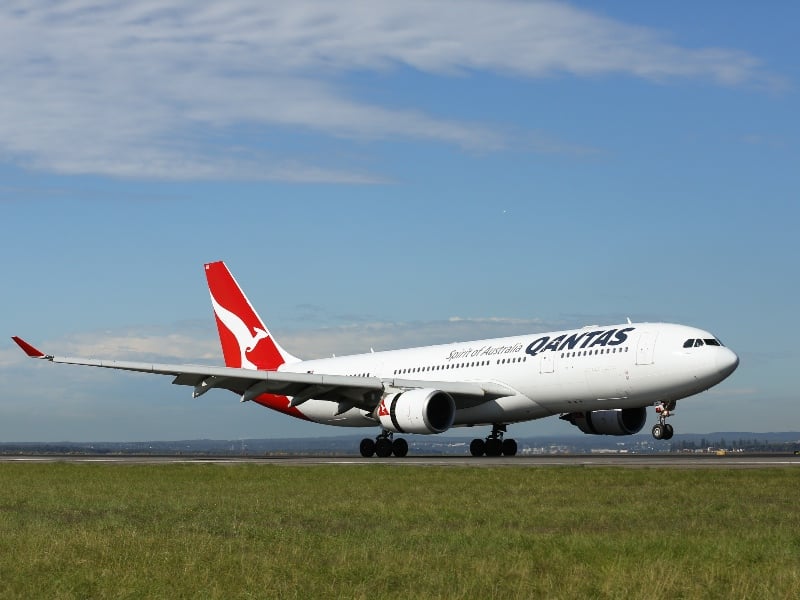
Update: Qantas has delayed the resumption of flights between Brisbane and the United States, but still plans to use Airbus A330s when these routes resume in 2022.
Qantas plans to gradually resume international flights from 18 December 2021. But with Qantas’ Airbus A380s not returning to the skies until mid-2022, the Boeing 747s retired and the delivery of three more Boeing 787s deferred until next year, the airline doesn’t quite have enough planes in the short term to operate its usual schedule.
One way that Qantas will get around this is by flying Airbus A330-200s from Brisbane to Los Angeles and San Francisco. These aircraft are normally reserved for domestic flights, trans-Tasman routes and shorter international services to Asia.
Prior to COVID-19, Qantas used Boeing 787-9 Dreamliners on its Brisbane-Los Angeles and Brisbane-San Francisco routes.
From 19 December 2021, Qantas currently plans to operate 3x weekly services from Brisbane to Los Angeles using A330-200s. Assuming the Queensland government allows international travel by then – which is by no means guaranteed – Qantas would operate the following flights on this route:
- QF15 Brisbane 10:40 – Los Angeles 06:05 (Wednesdays, Fridays & Sundays)
- QF16 Los Angeles 23:20 – Brisbane 07:45 +2 days (Wednesdays, Fridays & Sundays)
Meanwhile, current schedules would see Qantas resuming the following non-stop Brisbane-San Francisco flights using A330-200s from 14 February 2022:
- QF59 Brisbane 21:30 – San Francisco 16:50 (Mondays, Thursdays & Saturdays)
- QF60 San Francisco 22:00 – Brisbane 06:25 +2 days (Mondays, Thursdays & Saturdays)
As it happens, this Brisbane-Los Angeles service will be the only remaining eastbound Qantas trans-Pacific service to depart in the morning. Qantas has retimed its Sydney-Los Angeles, Melbourne-Los Angeles, Sydney-Dallas/Fort Worth and Sydney-San Francisco services to depart in the evening. (The Sydney-Honolulu and Sydney-Vancouver routes already departed in the late evening and will continue to do so.)
For passengers, the Airbus A330 is a comfortable aircraft to fly on. The Qantas A330 Business Class seats are almost identical to those found on the Boeing 787-9, except that there is no privacy divider between the Business seats in the centre section.
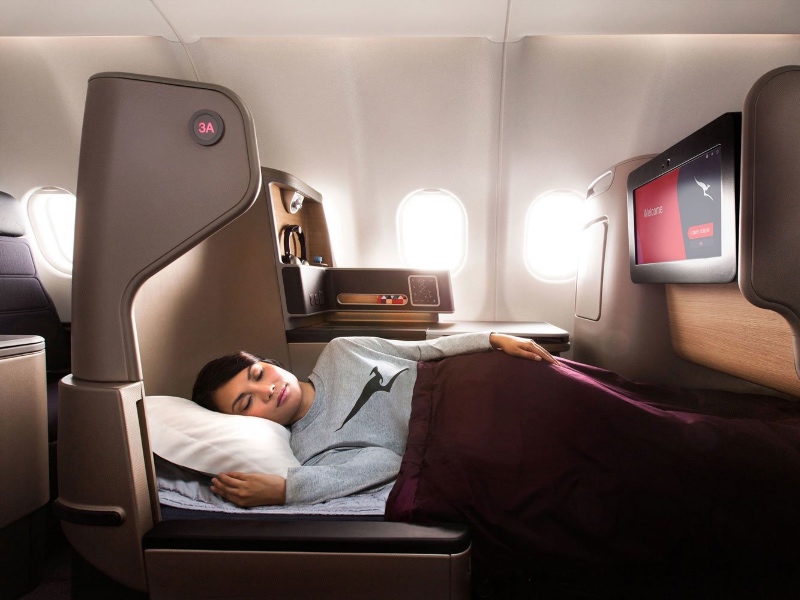
In Economy, some passengers may even prefer the A330’s 2-4-2 seating layout over the tight 3-3-3 configuration on the Boeing 787. The Qantas A330 Economy seats are wider than the Boeing 787 Economy seats, although there is an extra inch of legroom on the Dreamliner.
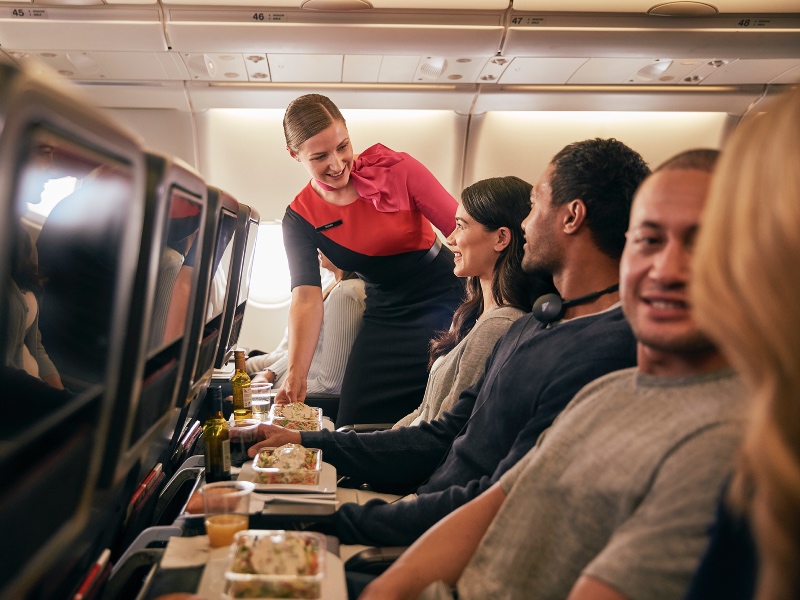
On the internationally configured A330-200s, there are seat-back in-flight entertainment screens at every seat.
The main downside for passengers is that there are significantly fewer Business seats and no Premium Economy cabin on the Airbus A330. This means there will likely be fewer opportunities to snag Business reward seats or upgrades on the Brisbane-Los Angeles route (in particular), and no option to upgrade to Premium Economy.
Operational challenges for Qantas
For Qantas, there are some challenges involved in using A330s on such long flights.
According to Qantas’ own website, the standard range of an Airbus A330-200 with full payload is 8,500km. But the distance from Brisbane to San Francisco is 11,367km and Brisbane-Los Angeles covers 11,525km.
Qantas is in the process of getting approval from Airbus to extend the range of its A330-200s to allow flights on some trans-Pacific routes. This doesn’t involve any physical changes to the aircraft, but Airbus does need to sign off on some documentation.
This isn’t the only hurdle Qantas needs to overcome. With westbound Los Angeles-Brisbane and San Francisco-Brisbane flights both clocking in at 14 hours and 25 minutes, flights will likely have to be weight-restricted. Qantas may not be able to sell 100% of seats and could be limited in the amount of freight it’s able to carry due to the amount of fuel that will need to be uplifted and maximum take-off weight restrictions.
With crew duty times on the westbound sectors exceeding 15 hours, Qantas will also need to provide crew rest facilities on these flights. But unlike the A380s and 787s which have bunk beds for the crew, Qantas does not have a dedicated cabin crew rest area on its A330-200s.
To overcome this problem, it seems Qantas plans to block one Business Class seat to use for pilot rest and an additional 20 Economy seats to use as a cabin crew rest area.
You can see on the seat map that Qantas is not selling the Business Class seat 5A on its Brisbane-Los Angeles services. (5K already doesn’t exist as there is a toilet there, but there is normally a seat at 5A on this configuration of the A330-200):
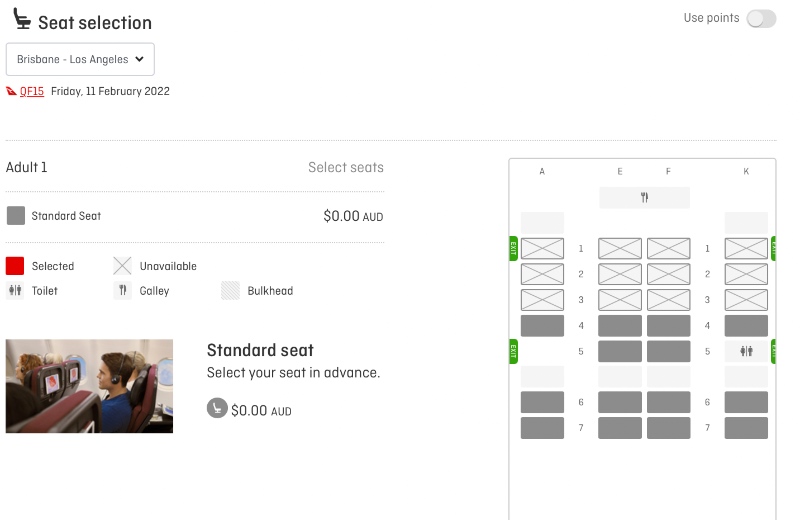
In Economy, Qantas has blocked five rows of Economy seats in the middle section from rows 33-37:
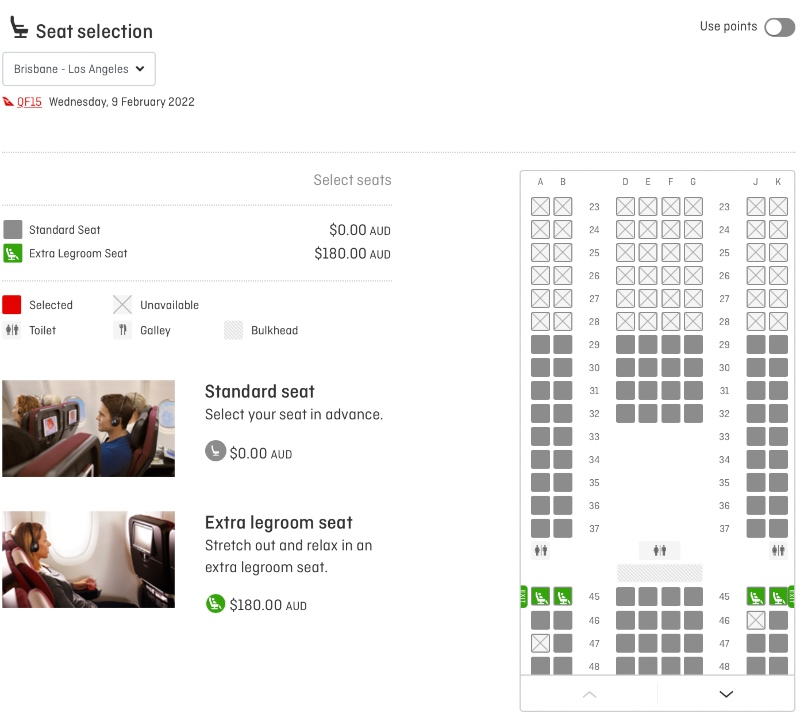
On mid-range international flights operated by A330-200s, such as Sydney-Manila, Qantas normally just blocks seats 37A/B and 37J/K in Economy class to use as curtained crew rest areas.
As Qantas would not be able to sell every seat due to weight restrictions anyway, this solution kills two birds with one stone. But it does reduce the number of Business seats available for sale on each flight to 26, and the Economy class capacity is reduced to 204 seats.
I do wonder if the cabin crew rest conditions are really conducive to peaceful sleep. Each crew member would have a row of four Economy seats to sleep across during their break, which is better than nothing. But many of us who’ve tried to sleep across a row of Economy seats know that it’s not the same as a proper bed.
The crew will also be surrounded by other passengers with potentially only a makeshift curtain separating them from the rest of the Economy cabin. (The seats being allocated are also right in front of the toilets.) I can already see confused passengers moving themselves into the crew rest seats and waking up cabin crew during their rest breaks to ask for a drink.
Qantas has flown A330-200s to Los Angeles before. But those flights operated as Sydney-Auckland-Los Angeles-New York, meaning the overall sector lengths were shorter.


